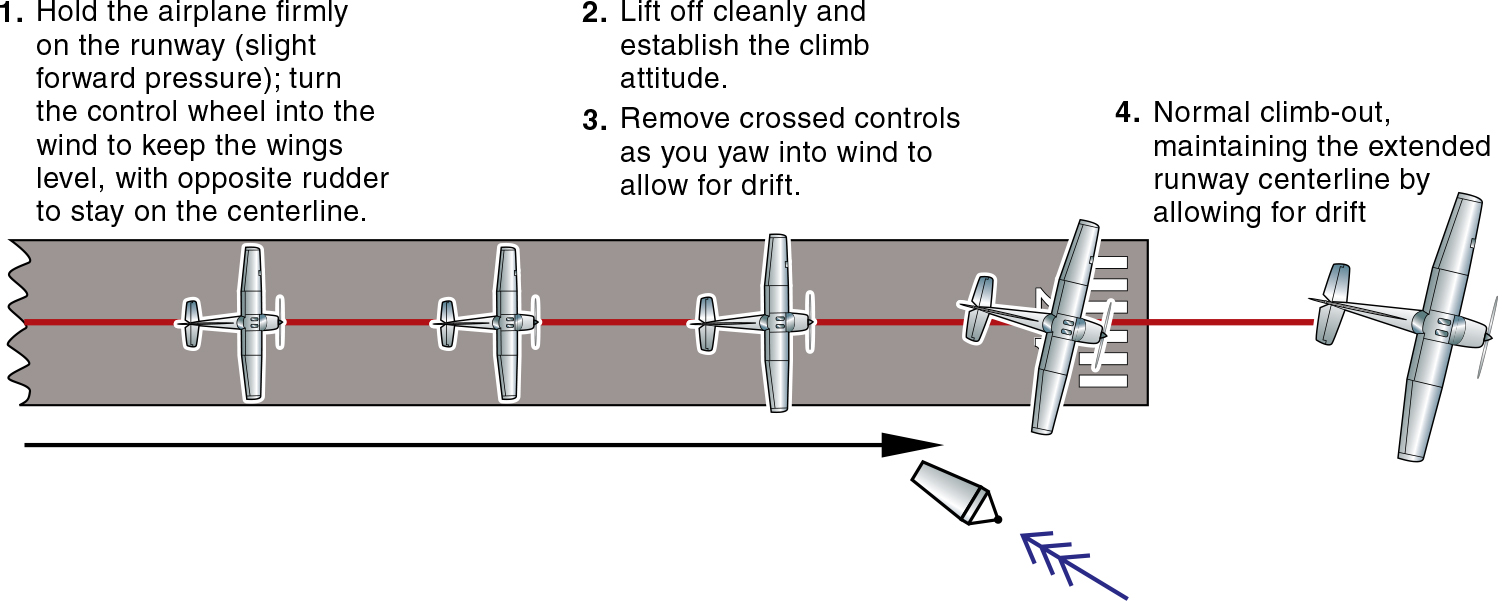Since The Pilot’s Manual: Flight School (PM-1) is now available in eBook format, this week we’ll feature another maneuver from the textbook. The fifth edition of Flight School covers everything you need to know in order to fly your airplane through the maneuvers required for certification.
Not all airports have a runway that faces upwind on a given day. For this reason, takeoffs and landings on runways where there is a crosswind component are frequent events. Every airplane type (from the smallest trainer up to the Airbus A340 and Boeing 747) has a maximum crosswind component specified in the flight manual and pilot’s operating handbook. If the actual crosswind component on the runway exceeds the limit for the airplane or what you feel is your own personal limit, then use a different runway (which may even mean proceeding to a different airport).
Technique
Takeoff Run
A crosswind blowing under the upwind wing will tend to lift it. Counteract this effect and keep the wings level with aileron; that is, move the control column upwind. While full deflection might be required early in the takeoff run, this can be reduced as the faster airflow increases control effectiveness. You do not have to consciously think of aileron movement; just concentrate on keeping the wings level.
A right crosswind, for example, requires right control column and left rudder (crossed controls). A glance at the wind sock before you open the throttle for the takeoff run will allow you to anticipate this and position the controls correctly.
As speed increases, the amount of aileron and rudder required will reduce until, at liftoff, there will probably be some rudder still applied, but little or no aileron. There is no need to consciously think about this; just:
- keep straight with rudder; and
- keep the wings level with the ailerons.
Liftoff
Allow the aircraft to accelerate. Use as much rudder as necessary but avoid braking. In a crosswind takeoff, hold the airplane on the ground during the ground run (with slight forward pressure on the control column) and then lift off cleanly and positively. It may be advisable to delay liftoff until 5 knots or so past the normal rotation speed to achieve a clean (no skip) liftoff.
Drift After Takeoff
As the airplane enters the air mass after liftoff, it will tend to move sideways with it. Any tendency to sink back onto the ground should be resisted to avoid the strong sideways forces that would occur on the landing gear.
Once well clear of the ground, the aircraft will naturally yaw upwind (weathervane) to counteract the drift. Keep the wings level. Any remaining crossed controls are removed once airborne by centralizing the balance ball and keeping the wings level. Climb out normally on the extended centerline of the runway.





